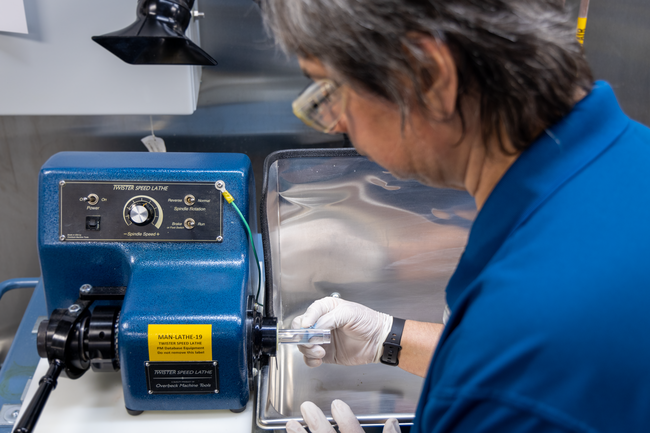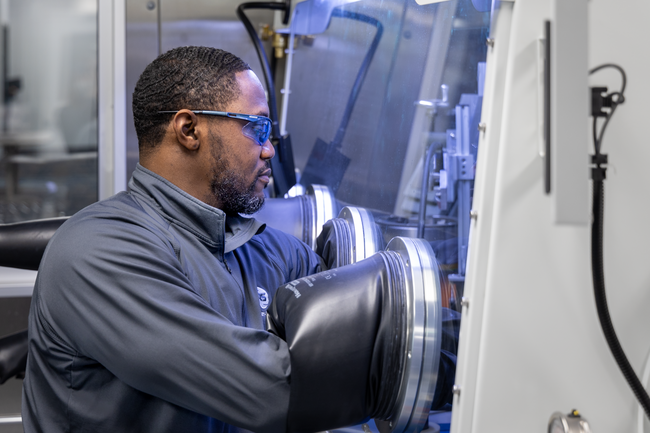
Decades of powerful downhole sensor solutions
As the upstream oil and gas market continues to evolve to faster drilling and advanced measurements, Reuter-Stokes has been at the forefront of delivering customized LWD gamma detectors for oilfield services companies and MWD/LWD system OEMs around the globe.
Founded in 1956, Reuter-Stokes has a long heritage of excellence in radiation detection and monitoring. Based in Twinsburg, Ohio, near Cleveland, the company has spent nearly 70 years perfecting its craft. It offers an extensive portfolio of gamma and neutron detectors and orientation module solutions that address the needs of multiple industries, including oil and gas, nuclear power, industrial and radiation monitoring. Today there are hundreds of thousands of Reuter-Stokes detectors installed across these industries.

It’s no surprise, then, that Reuter-Stokes engineers understand drilling service and wireline companies across the globe need accurate, trustworthy and reliable downhole sensors that get the job done time and again. Reuter-Stokes has the technical prowess to understand crucial downhole measurement needs and how best to accomplish them.
All of Reuter-Stokes’ custom-designed, high-performance downhole solutions stand up to high temperatures, shock, vibration and compact space constraints, all of which can hinder the accuracy and resolution of formation evaluation measurements.
Its scintillation detectors for gamma-ray spectroscopy applications are optimized for precise energy resolution, and gross gamma counters are optimized for light output and sensitivity for logging-while-drilling (LWD) applications. Its orientation modules for measure-while-drilling (MWD) keep drilling on course with accurate surveys at extreme downhole shock, vibration, and temperature.

Customized detection
No two downhole applications are the same. That’s why Reuter-Stokes specializes in custom design for any detection requirement, delivering the expertise, quality and performance from start to finish for any downhole drilling challenge.
Reuter-Stokes has standard products to meet most drilling applications. Because the market is trending to harsher environments, demand is growing for specialized sensors with increased capabilities adapted to a customer’s specific job. As such, Reuter-Stokes is designing beyond its current catalog offerings to offer custom solutions.
Custom product design is a collaborative process focusing on a customer’s need and input to ensure the final result meets the rigors of its given application. Our team aims to deliver improvements users can measure – in efficiency and reliability. The design inputs for operating temperature, shock and vibration, as well as nuclear physics requirements for performance allow Reuter-Stokes to fully model, design and qualify customized offerings for downhole drilling customers.
Reuter-Stokes offers three product categories for downhole applications:
Gamma-ray scintillation detectors
Whether customers need gross counting, spectral, or litho‑density detectors, Reuter‑Stokes has the answer in a broad range of configurations, including crystal size, mounting and interface adaptations, as well as built-in radioactive check sources. All crystal packages are optimized for light output, energy resolution, and sensitivity.
Delivering one of the industry’s highest sensitivities, Reuter-Stokes gamma sensors provide geologists and drilling contractors with the precise measurements required for accurate formation location and identification.
Features and benefits of these customizable sensors include:
• Operating temperatures: to 200˚C (392˚F)
• Shock survivability to 1,000 g, 0.5 msec duration
• Random vibration rating up to 20 g RMS, 10 to 500 Hz
Neutron detectors
Reuter-Stokes has been providing neutron sensors to the oil and gas industry for decades. With over 67,000 neutron detectors sold to date and a portfolio of more than 10,000 designs, customers can be assured they’ll get the perfect detector for their application requirements.
Based on the pioneering Reuter‑Stokes Helium‑3 proportional tube design, the company’s latest thermal and epithermal detectors are renowned for their consistency and reliability regardless of temperature, pressure, shock or vibration conditions.
Features and benefits of these detectors include:
• Plateau slope <2% per 100 V over a minimum 200 V range
• At least 100 V common plateau between room temperature and +175˚C (347˚F) with <2% count rate shift
• Patented anode suspension minimizes shock‑induced false counts

Directional sensors and orientation modules
Reuter‑Stokes’ custom‑designed orientation modules provide unsurpassed measurement accuracy, reliability and calibration stability – and they’ve helped customers achieve drilling records for depth, pressure and temperature.
The current portfolio includes a wide range of sizes, electronics packages, and configurations. Innovative compact electronics and packaging designs result in smaller, more powerful orientation modules with borehole survey technology designed to fit into the smallest tools.
The technology has undergone extensive thermal cycle and soak testing. Historical results have indicated at least a threefold reduction in total magnetic field spread and bias change over time. This doubles both the life and mean time between calibrations, which directly translates to a lower cost of ownership.
Features and benefits of these modules include:
• Operating temperature range: from -20˚C to 175˚C (-4˚F to 347˚F) and a survival temperature range from -40˚C to 185˚C (-40˚F to 365˚F)
• Customizable orientation modules including a wide range of sizes, electronics packages, and configurations
• State-of-the-art total field calibration lab with best-in-class calibration services
By providing accurate and stable survey measurements with minimal downhole power consumption, the orientation module reduces the operational costs associated with downhole batteries and enables the horizontal drilling techniques required for unconventional resource development.
Measurement applications
Reuter-Stokes’ downhole sensors are suitable for LWD, MWD and wireline operations, including:
Gross counting gamma: Passive gamma measurement to determine formation boundaries.
Spectral gamma: Passive gamma measurement to determine the element emitting the gamma rays.
Density gamma: Active gamma measurement is used to determine the density of the formation.
Neutron porosity: Active neutron measurement used to detect hydrogen in the formation.
Inclination: Measures angle from vertical using accelerometers.
Azimuth: Measures compass heading of hole direction relative to the Earth’s magnetic pole using magnetometers.
Rugged design for harsh environments
Extreme conditions have nothing on downhole detection devices from Reuter-Stokes, all of which are designed for accuracy, reliability and durability in the most extreme conditions. Validated by extreme temperature, vibration, and shock testing, Reuter-Stokes products benefit from the company’s longtime industry experience and the associated proprietary processing techniques that have evolved from it. Across multiple target sectors, Reuter-Stokes detectors are regarded by many as the industry standard.
All downhole sensors undergo extensive testing at every stage of design, qualification and production. Testing covers all possible factors affecting durability, accuracy and reliability. Rigorous calibration processes mean that all of these sensors meet or exceed our customers’ expectations. Reuter-Stokes fully supports all of its products with ongoing services in advanced labs, as well as warranties that often exceed industry standards.
To further ensure downhole reliability, beyond electrical and crystal production testing, every gamma detector shipped from Reuter-Stokes is vibration tested. Additionally, customized offerings focus on customer-specific designs, resulting in unique mechanical interfaces, specialized acceptance test requirements, and unique part numbers that are only sold to authorized clients.


Investment in advanced scintillators, production and customers
Reuter-Stokes’ manufacturing facilities have the advanced technologies and rigorously controlled quality assurance needed to deliver precise and reliable downhole sensor units. The company has invested in this production capacity by adding over 1,600 square feet of dry room production space for scintillation crystal processing to its 163,000-square-foot Twinsburg plant.
This new space has tightly controlled humidity levels, state-of-the-art, ppm-level dry boxes and expanded CNC capabilities. The result? The ability to deliver more downhole solutions in a shorter amount of time.
The plant also features a non‑magnetic total field calibration building. Its vertically integrated manufacturing process enables complete control over every aspect of detector performance. Patented technologies and extensive, rigorous testing at every stage of the design, qualification, and production processes further ensure sensor durability in even the most severe downhole conditions.






